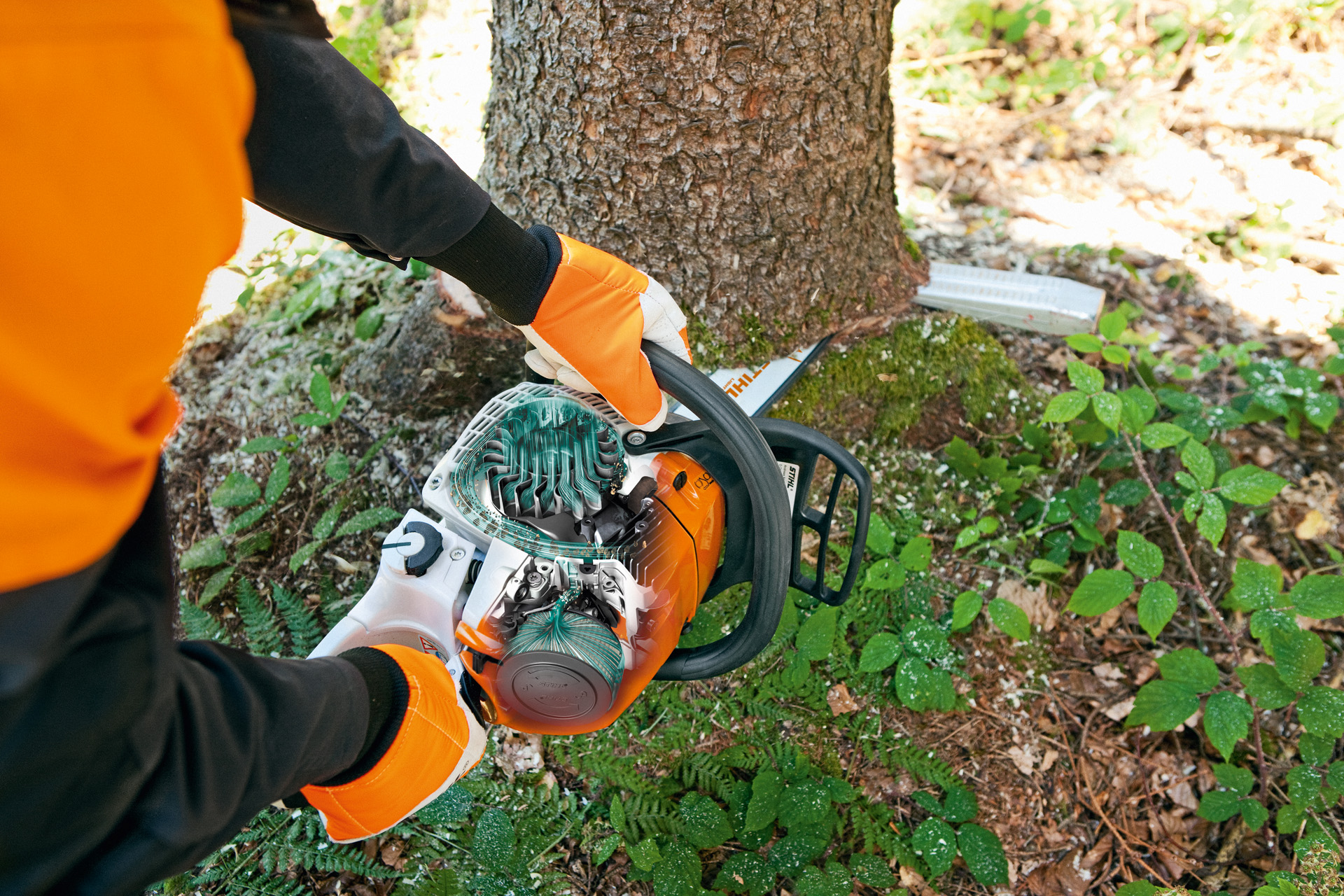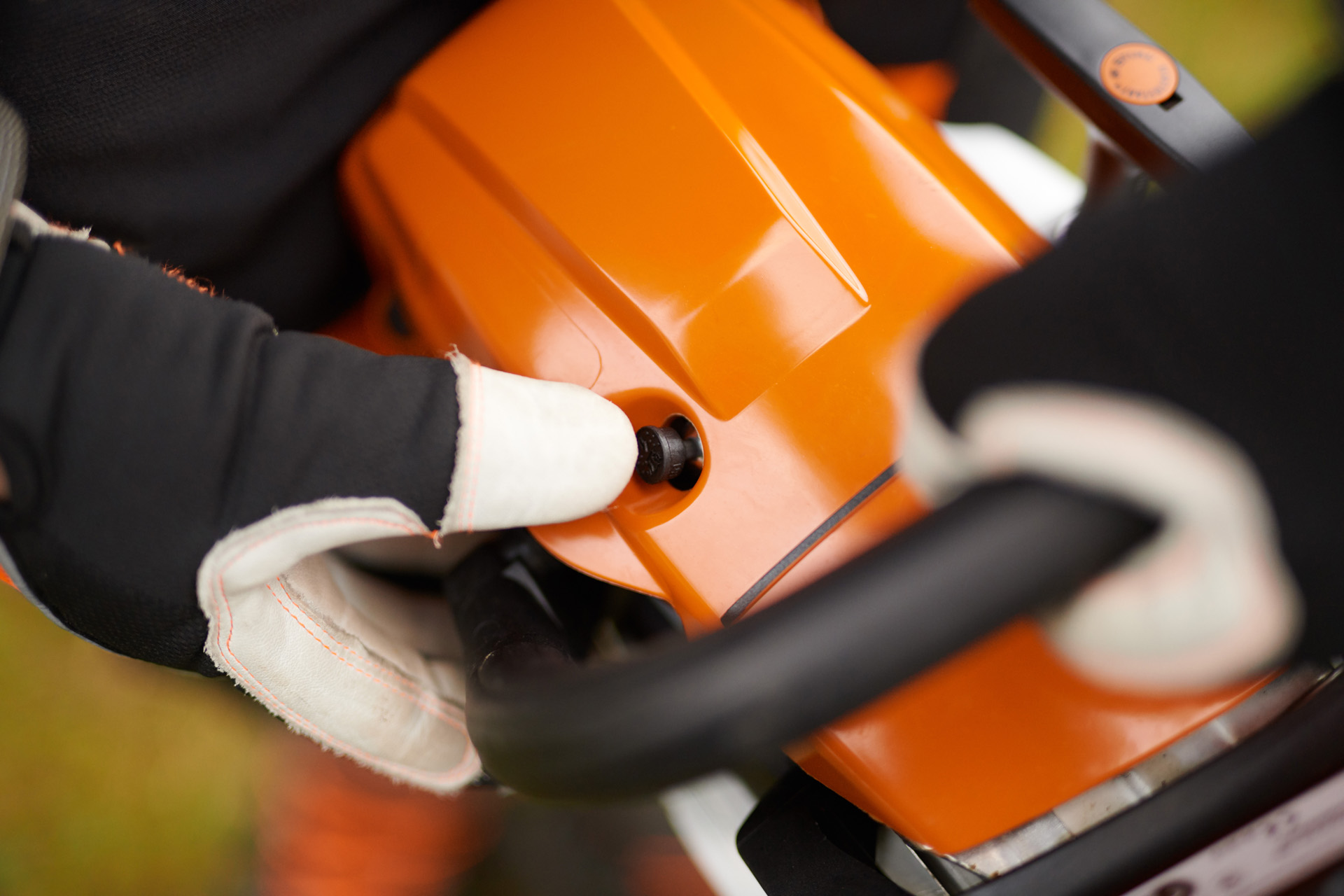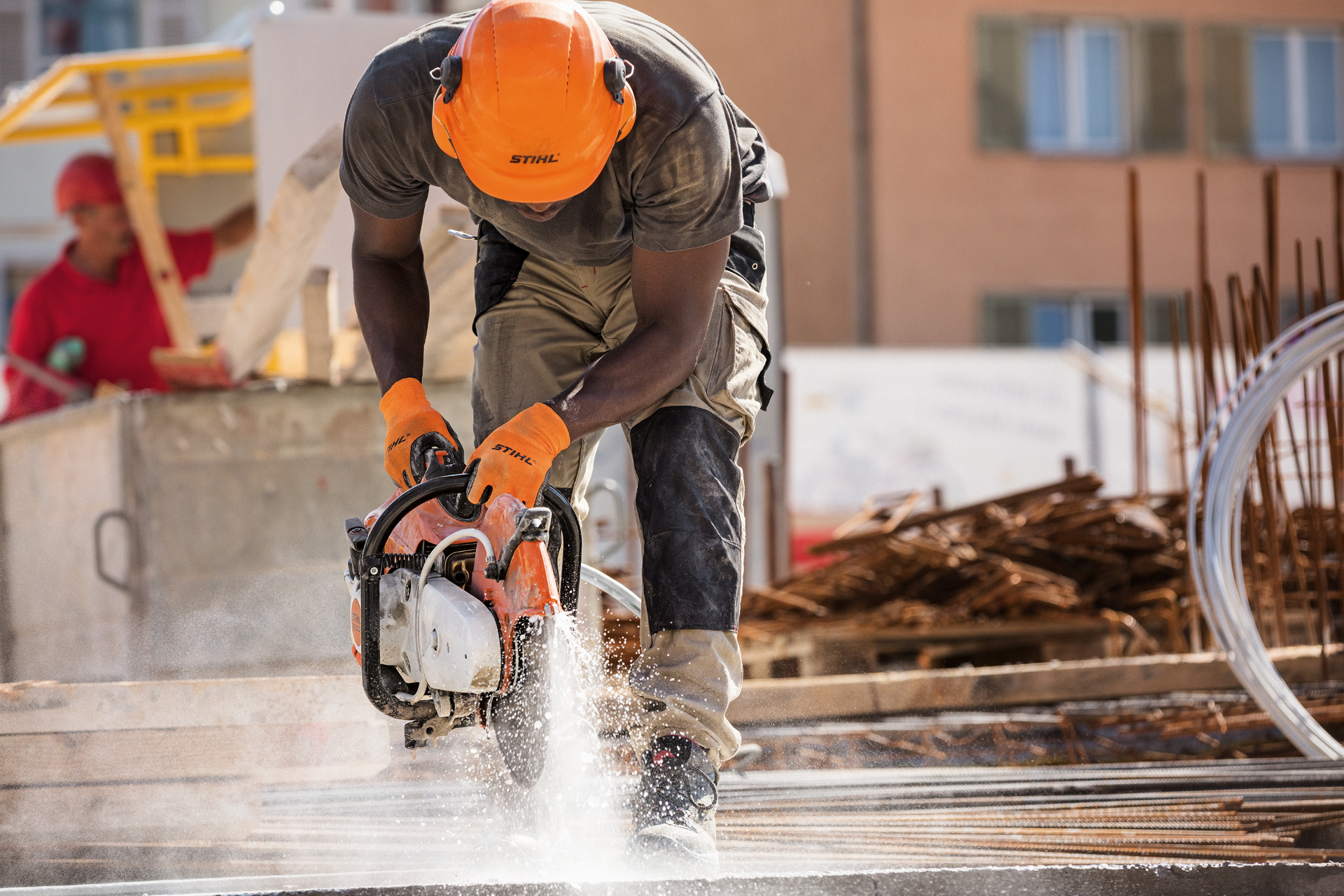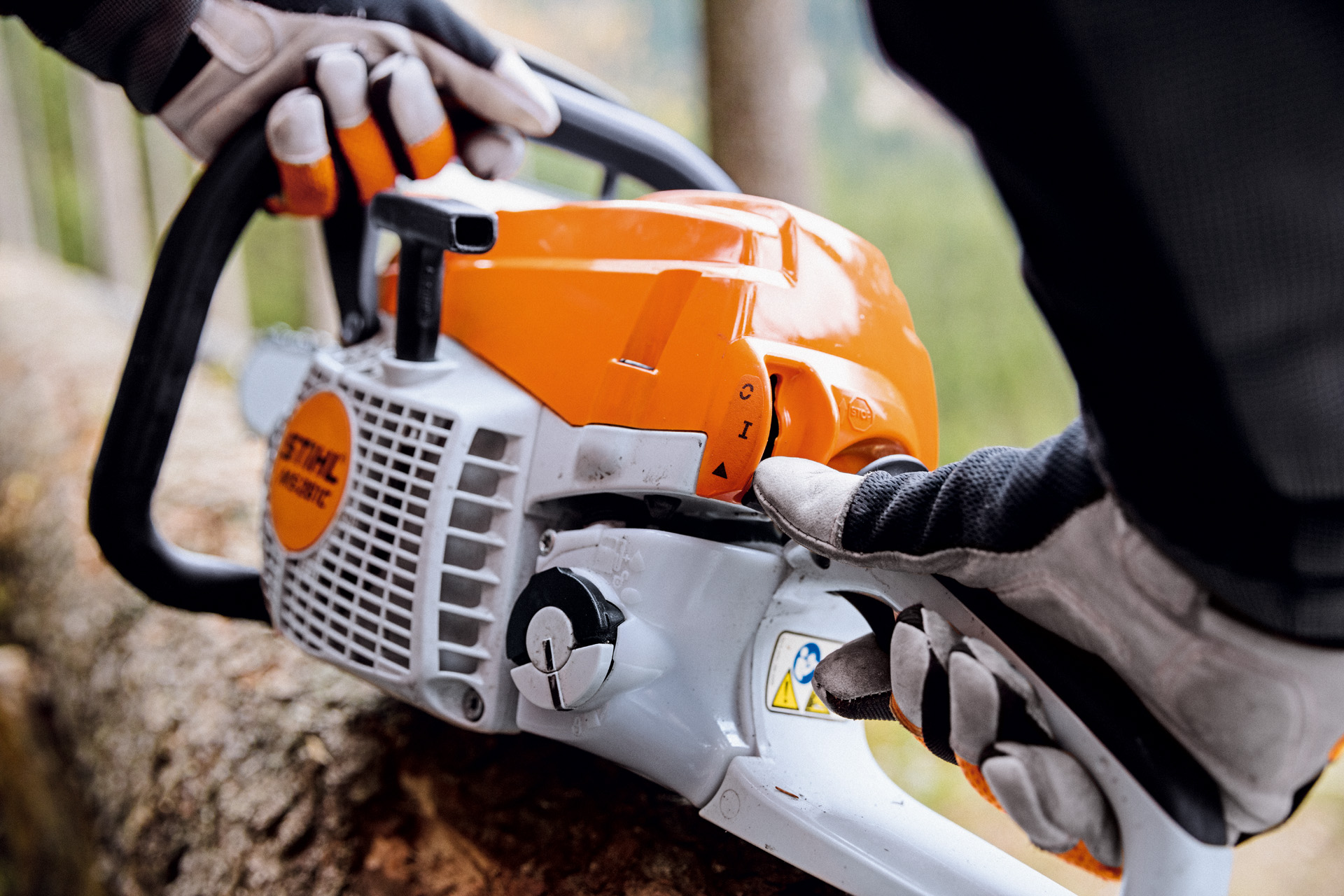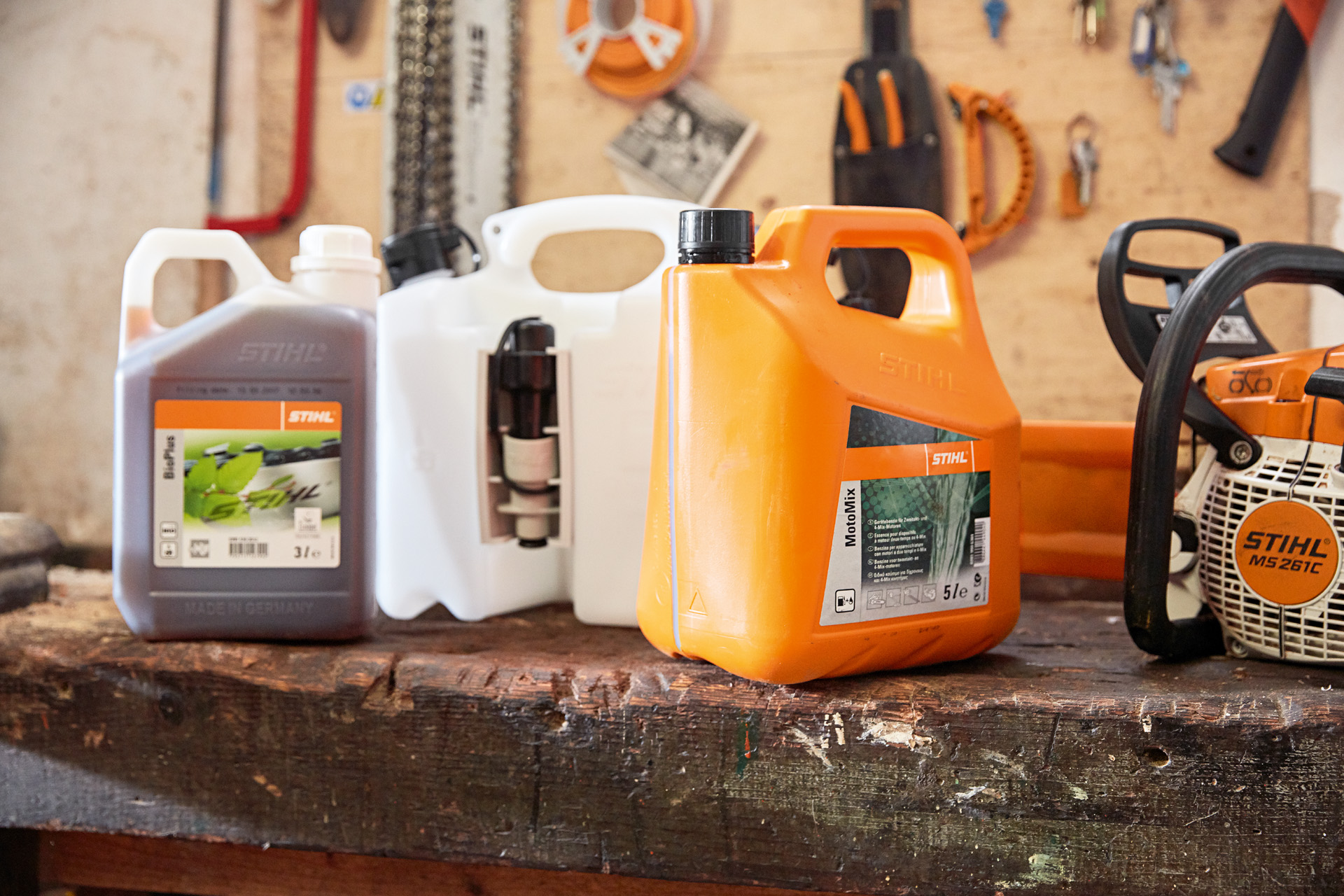STIHL carburettor heating: for reliable operation through the coldest winters
Even in winter conditions, a STIHL chainsaw with carburettor heating won’t let you down, protecting you from carburettor icing and power failure.
07.07.2023

electric Carburettor heating: always ready for work
A carburettor with electric heating has a temperature-dependent automatic on-off control, ensuring that even in low temperatures your STIHL chainsaw works perfectly. The heater prevents the carburettor from icing up in freezing conditions, keeping the fuel mix keeps flowing smoothly to maintain the tool’s performance. For all day working comfort, all STIHL models with an electric carburettor heating also have heated handles. STIHL chainsaws with electric carburettor heating and heated handles can be identified by the “V-W” in the product designation.
How electric carburettor heating works
Why do I need electric carburettor heating?
Immediately after fuel is released from the carburettor nozzles, it is mixed with air in a process that lowers the temperature of the intake air by up to 9°C. After cooling, this air can carry less vaporised moisture, leading to condensation in the carburettor which precipitates around the throttle valve. If the intake air temperature is between 3°C and 10°C, the sudden cooling can cause ice to form around the throttle valve, constricting the carburettor’s airflow and causing a drop in the power tool’s performance – and its eventual failure.
If the intake air temperature is below 3°C, the air humidity is actually too low to allow formation of ice; while air temperatures of around 10°C or higher are warm enough to avoid the condensed moisture turning into ice. Based on these temperatures, chainsaw work in autumn, winter and early spring is likely to benefit from electric carburettor heating.

Two routes to winter reliability
The simple way to prevent the formation of ice on the carburettor throttle valve is to heat the carburettor circuit, which STIHL does in two ways.
In chainsaws intended for domestic and occasional use, warm air heats the intake air to control the temperature inside the carburettor. This is a passive system that works by means of a 'winter/summer' slide or valve that is opened to feed cylinder-warmed air into the air filter. With this system activated, it takes just a few minutes of running the engine to avoid the critical temperatures that can lead to ice forming in the carburettor. To use this passive system the user must move the slide or valve to the “Open” setting for winter; we recommend building this into existing seasonal routines, for example switching to winter tyres in October and back to summer tyres at Easter.
STIHL professional power tools for forestry use an integrated electric carburettor heating. This is an active system in which a heater element is automatically switched on to heat the carburettor as soon as the critical temperature range is reached, with no user intervention necessary. The carburettor heater element is supplied with power via a separate generator near the flywheel – the same generator also provides power for the heated handles that always accompany the electric carburettor heater in STIHL professional forestry chainsaws. Models with these features are identified by the code “V-W” in the product name.
Both systems are vital during the first 10 minutes of engine use; after that, the heat radiated by the engines will usually be enough to avoid the critical temperature range.
The STIHL electric carburettor heater
The STIHL electric carburettor heater consists of an electric heater element and a thermostat, with the heater element fitted upstream of the carburettor. The thermostat may be on the pump-side carburettor cover or fitted directly onto the heater element.
The carburettor heater’s power is automatically supplied by the heater generator. As soon as the carburettor temperature falls below a critical temperature of 10°C, the thermostat switches on the heater element. Ice is effectively prevented from forming in the carburettor and the engine is able to run smoothly.

What are the advantages of electric carburettor heating?
With electric carburettor heating you can depend on your STIHL power tool even at low temperatures. It means your engine will not falter at low speeds or when idling, reducing the need to adjust the carburettor in cold weather. Another advantage of the STIHL electric carburettor heater is the simplicity of its design. Because the heater element works with no need for fuel to flow through the carburettor heater, there is no need to worry about complex engine modifications – unlike other automatic carb heater solutions. The STIHL carburettor heater design also has the advantage that it does not substantially increase the total weight of your chainsaw.
Can a carburettor heater be retrofitted?
The electric carburettor heater is not included as standard in all STIHL chainsaws, only in the MS 261 C-M and MS 500i. Our electric carburettor heater modules are tailored to fit these particular chainsaws, so they cannot be retrofitted into other chainsaw models. Your local STIHL dealer will be happy to answer any questions you might have regarding carburettor heaters.
Summary: STIHL electric carburettor heater
- Electric carburettor heating from STIHL prevents formation of ice in the carburettor, meaning the chainsaw performs particularly well in cold weather
- The STIHL electric carburettor heater is not a complex engine modification, but a stand-alone system
- The STIHL electric carburettor heater cannot be retrofitted
- STIHL chainsaws with electric carburettor heating are identified by a “V” in the model name
- The STIHL chainsaws with electric carburettor heating always come with heated handles (“V-W”)
